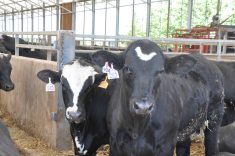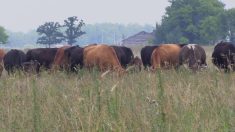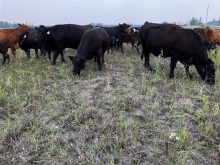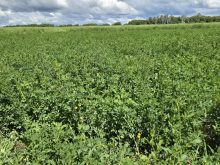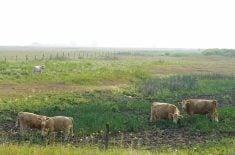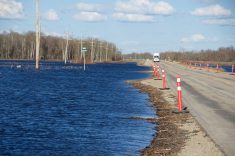Precipitation has been low across much of the province this winter, but widespread drought like that of 2021 is unlikely this year, says Manitoba Agriculture meteorology specialist Allison Sass.
The 2021 drought stood out as the culmination of a multi-year dry spell. That’s not the case as this growing season approaches.
“We’re not seeing the accumulated years of dryness that were seen in the lead up to 2021’s drought,” said Sass.
Read Also

Journal pulls long-cited glyphosate study for ethics violations
The journal Regulatory Toxicology and Pharmacology has retracted a 2000 Monsanto-linked glyphosate review, drawing new scrutiny as Bayer faces mounting legal pressure.
The spring following that historic drought swung abruptly to the other extreme. Fields were drenched after a string of Colorado lows piled snow in early spring. Overland flooding from the melt put fields underwater, created island communities in parts of the Red River Valley. Cattle producers in affected areas scrambled to get herds to higher ground.

The 2023 rainfall mostly came through a patchwork of storms. Central Manitoba was particularly parched, but there was enough moisture to eke out decent yields across the province.
Soil moisture at freeze-up also eased some pressure in fall 2023, Sass noted.
“We were seeing pretty good soil moisture levels for the majority of the province — between 60 and 100 per cent of the available water holding capacity at both the zero to 30 centimetre depths and the zero to 120 centimetre depth. That’s because some of the precipitation we got later in the fall was able to recharge some of that soil moisture before it froze up.”
That doesn’t necessarily mean farmers are in the clear. Scant winter precipitation is a concern and areas of drought conditions may develop, even if a province-wide crisis is dodged.
“Most of the areas, especially the southwest and central region, have received below-normal precipitation since Nov. 1,” said Sass.
Many of the agriculture department’s weather stations in those areas show less than 40 per cent of the 30-year average, she noted, and snow cover has been sparse. Other regions have received near-normal or above-normal precipitation throughout the winter.
“Areas around Riding Mountain National Park have received over the 30-year average, as well as parts of the Interlake around Fisherton and Moosehorn, and parts of the east as well,” said Sass.
The federal government’s Canadian Drought Monitor shows all Prairie regions in a state of drought, although the latest update only includes data to the end of February. Swaths of moderate or severe drought are shown in much of southern and western Manitoba, while parts of south-central Manitoba are labelled as in extreme drought. All other agricultural regions in the province are listed as abnormally dry.
“I’m looking forward to seeing how that changes because we did get some pretty good precipitation at the beginning of March,” Sass said. “So I’m looking forward to how that pans out for their models.”
The federal drought forecast for Manitoba was considerably rosier than it’s last reported conditions. The Canadian Drought Outlook suggested that drought conditions would disappear across most of the province through March. As of print time, the drought monitor and drought outlook had not released March updates.

The melt
Snowpack was rapidly disappearing in the first week of April. Multiple days had forecasts with double-digit temperatures.
The March 20 Manitoba Flood Outlook reported variable frost depth across the province, but frost was generally considered to be shallower than normal due to above-average winter temperatures.
That’s good news for moisture-strapped regions. A a shallower frost depth potentially allows more infiltration of melt water.
According to the flood outlook, there are equal chances of above-normal, below-normal or near-normal precipitation across Manitoba in April, May and June.
“One major precipitation event can turn things around quite a bit,” said Sass. “It depends quite closely on what type of precipitation we’re getting — wet snow, dry snow or rainfall.”
Forecasting temperatures is a little easier. Models suggest a 40 to 50 per cent chance of hotter than normal temperatures. The central part of the province has a 50 to 60 per cent chance of above normal heat and in northern Manitoba, there is a 60 to 70 per cent chance of above-normal temperatures.
“With an agricultural drought, it depends on when you’re getting that rain in relation to our crops and livestock,” Sass noted. “If you get all the rain in the spring before you seed, that’s not going to necessarily help.”
If rain comes at the right time, even if the season as a whole is dry, good crops can result.
“It’s about getting that precipitation at the right point,” said Sass.




